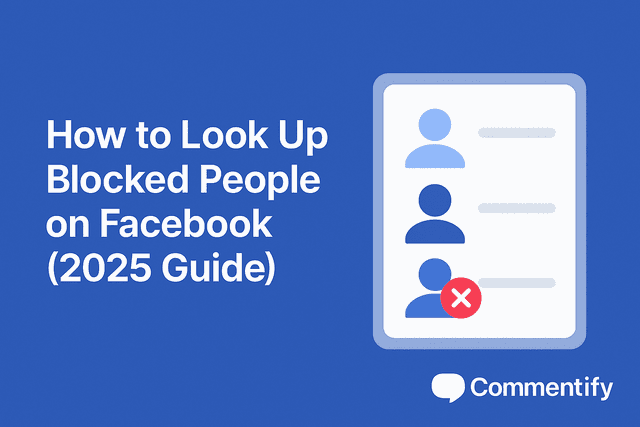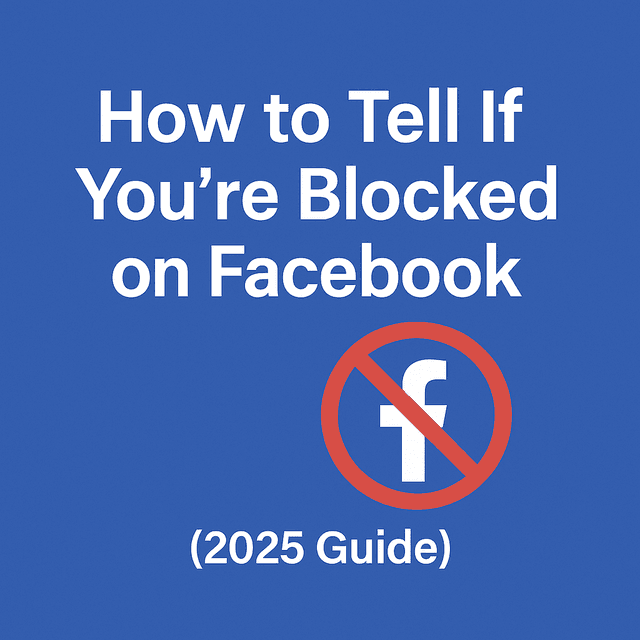Why can’t i see comments on facebook? Reasons, Fixes, and Smart Management
TABLE OF CONTENT
But many users have faced the same issue: comments simply don’t appear. You open your timeline, tap on a post, and find the comment section empty or incomplete. This can be irritating for casual users and costly for businesses, since comments often contain valuable feedback, testimonials, or even potential sales leads.
So why does this happen, and more importantly, how can you fix it? Let’s explore in detail.
What Is Facebook and Why Does It Have Comments?
To understand the problem, we need to start with the basics.
Facebook’s Role in Social Interaction
Facebook began as a platform for college students, but today it’s a global communication hub. Its defining feature isn’t just posts—it’s engagement. And the primary form of engagement? Comments.
Why Comments Exist
- For users – They provide a way to respond quickly, whether with humor, support, or personal stories.
- For groups – Comments drive discussions, making communities dynamic instead of static.
- For businesses – Comments serve as instant customer feedback loops and act as public reviews.
Imagine a restaurant page where customers share dining experiences. Without comments, potential customers would have no peer validation, and the restaurant would lose an important source of feedback.
👉 This explains why losing access to comments—whether by glitch or design—can feel like losing the “pulse” of Facebook.
Why Can’t I See Facebook Comments?
There isn’t one simple answer. Instead, the issue usually falls into two categories:
- Human-related reasons (settings, filters, moderation choices)
- Technical issues (bugs, outdated software, or connectivity)
Let’s go through them systematically.
Human-Related Causes
1. Privacy Settings
- Users often set posts to “Friends Only” or even narrower audiences. You may see the post itself but not the comment thread.
- Example: Your coworker shares a status visible to you, but comments are restricted to “Close Friends,” leaving you puzzled about the missing replies.
2. Comment Filtering (Most Relevant vs. All Comments)
- By default, Facebook shows “Most Relevant” comments, hiding the rest. This prioritization depends on interaction, popularity, or Facebook’s algorithm.
- For hot topics, this can mean entire discussions vanish unless you manually switch the setting.
3. Group and Page Moderation
- Admins can set comment filters, such as holding posts with flagged keywords.
- In professional groups, terms like “promotion” or “email” are often filtered to avoid spam.
- If your comment contains these words, it won’t appear until an admin approves.
4. Deleted or Hidden Comments
- Users frequently remove their own replies, or Facebook auto-deletes ones that violate community standards.
5. Blocked Users
- If someone commenting has blocked you (or vice versa), their comments will never appear to you, even if others can see them.
Technical Causes
1. Cache and Cookies
- Browsers and apps store data temporarily. If these files get corrupted, comments may fail to load.
2. Outdated Versions
- Older versions of the Facebook app may not support newer features, causing glitches.
3. Network Issues
- Slow or unstable internet connections often load the main post but fail to pull in comment threads.
4. Facebook Bugs and Outages
- Occasionally, the issue is on Facebook’s side. In such cases, thousands of users may report missing comments at the same time.
How to Fix “Can’t See Comments on Facebook”
The solution depends on whether the cause is human-related or technical.
Fixes for Human-Related Causes
1. Adjust Privacy Settings
- If it’s your post, check visibility: Public, Friends, or Custom.
- Example: A small business promoting an event may unknowingly set posts to “Friends Only,” restricting comment visibility for potential customers.
2. Switch Filters to “All Comments”
- At the top of most comment sections, look for the filter option. Change from “Most Relevant” to “All Comments.”
3. Engage with Admins
- In groups, if you suspect your comment is pending review, politely ask moderators for clarification.
4. Unblock Users if Necessary
- If you’re missing specific individuals’ replies, check your block list.
Fixes for Technical Causes
1. Clear Cache and Cookies
- For browsers: Settings → Privacy → Clear Cache.
- For apps: Uninstall and reinstall Facebook.
2. Update Regularly
- Always keep Facebook updated. Many bugs are patched in newer releases.
3. Switch Devices or Browsers
- If comments don’t appear on mobile, test on desktop.
4. Stabilize Connection
- Switch between Wi-Fi and mobile data to troubleshoot.
5. Wait During Outages
- If a global outage is confirmed, patience is the only fix.
Why It’s Important to Solve Missing Comment Issues
Some users might think, “It’s just a glitch, who cares?” But missing comments carry real-world consequences.
For Individuals
- Loss of connection – Missing birthday wishes or supportive messages can make you feel isolated.
- Missed context – Without replies, conversations seem fragmented, leading to misunderstandings.
For Businesses and Creators
- Reputation Risk – Not seeing negative feedback means losing the chance to address it quickly.
- Lost Opportunities – Customers often ask product questions in comments. If you don’t see them, you lose potential sales.
- Weak Algorithm Signals – Engagement metrics like comments influence how widely your post is shown. Fewer visible comments = less reach.
👉 In short: comments are data. Not fixing this problem means ignoring valuable signals from your audience.
How to Manage Your Own Facebook Comments
Fixing visibility is step one. But once you regain access, you may face another challenge: too many comments to manage manually.
Manual Options
- Delete or hide inappropriate remarks.
- Enable Facebook’s keyword blocking for terms like “scam” or “spam.”
Smarter Option: Use Commentify
For brands, influencers, and agencies, manual moderation quickly becomes overwhelming. This is where Commentify offers a smarter path:
- AI Sentiment Analysis → Instantly labels comments as positive, neutral, or negative.
- Automatic Blocking → Removes offensive or spam comments before they cause harm.
- Centralized Dashboard → View and manage comments across multiple posts, campaigns, and even platforms like Instagram.
- Reputation Protection → Stop harmful conversations from snowballing into PR crises.
Case Study
A small skincare brand ran Facebook ads and saw hundreds of spam comments like “Check my profile” or “DM for discounts.” Valuable customer questions got buried. After integrating Commentify:
- Spam was auto-filtered.
- Customer questions were prioritized.
- Ad ROI increased because genuine engagement wasn’t lost in the clutter.
FAQs About Facebook Comment Visibility
Q1: Why can’t I see comments on my Facebook post?
- Often due to privacy settings or “Most Relevant” filters.
Q2: Why can’t I see comments in a Facebook group?
- Comments may be pending admin approval or filtered out by keywords.
Q3: Why can’t I see replies to a comment?
- Replies are often collapsed. Tap “View more replies” to expand.
Q4: Why can’t I see comments on Marketplace posts?
- Some sellers disable comments, and expired listings may hide them.
Q5: Can deleted comments be restored?
- If removed by the user or Facebook, no. If filtered, yes—change your settings.
Conclusion
Not being able to see Facebook comments can feel like losing part of the conversation. Thankfully, most causes—whether human-related or technical—have simple fixes. Adjusting privacy settings, switching filters, clearing cache, or updating your app usually solves the issue.
But solving visibility is only the start. For individuals, comments are about connection. For businesses and creators, they are critical for engagement, reputation, and growth.
That’s why using a solution like Commentify makes sense. Instead of drowning in spam or risking reputational harm, you gain a clean, insightful comment section that works for you—not against you.
👉 Next time you wonder “Why can’t I see comments on Facebook?”, remember: the fix isn’t just technical. It’s also about smarter management that ensures you never miss the voices that matter most.
Read More
People Also Enjoyed
How to Look Up Blocked People on Facebook (2025 Guide)
Learn how to find, manage, and unblock people on Facebook. See your blocked list easily and discover how Commentify helps you manage comments smarter.
2025-10-23
How to Tell If You’re Blocked on Facebook (2025 Guide)
Learn the real signs you’ve been blocked on Facebook, how to confirm it, why it happens, and what to do next — for both personal and business accounts.
2025-10-23
Stop Facebook Spam Tags: How to Remove & Prevent Them
Tired of spam accounts tagging you on Facebook? Learn how to remove unwanted tags, block fake accounts, and enable Tag Review to protect your profile from malicious tags.
2025-10-16
How to Stop Spam on Facebook Messenger (2025 Guide)
Learn how to block spam on Facebook Messenger, manage message requests, and protect your inbox using smart filters and AI tools like Commentify.
2025-10-15
How to Manage Facebook Comments Effectively
Step-by-step guide to handling Facebook comments. Learn manual methods, best practices, and how Commentify automates moderation and analytics.
2025-09-16Why Isn’t Facebook Refreshing? Fix It Fast
Wondering why your Facebook page won’t refresh? Learn quick fixes for computer, iOS, and Android to reload your feed and see the latest posts.
2025-09-11
Automated Facebook Marketing Made Simple: How to Use Ads & Tools to Grow in 2025
Learn how automated Facebook marketing works in 2025. Discover automated ads, top tools, and why solutions like Commentify are essential for growth.
2025-09-10
Why Is Facebook Censoring You? 2025 Guide to Keep Your Content Live (Plus Tools to Avoid Removals)
As of early 2025, Statista’s latest data shows a worrying trend: 43% of global Facebook users have experienced content removal or restriction, with searches for “complaints against Facebook censorship” jumping 32% year-over-year—up from 28% in 2024.
2025-09-03
How to Manage Comments on Facebook Ads (Complete 2025 Guide)
Facebook is one of the most powerful advertising platforms ever created. With billions of active users and highly targeted ad capabilities, it gives brands and creators an unmatched opportunity to reach potential customers. But with that reach comes a challenge: the comment section.
2025-08-27
Why can’t i see comments on facebook? Reasons, Fixes, and Smart Management
Facebook isn’t just a place to post photos or updates—it’s one of the world’s largest platforms for interaction. Every day, billions of comments are exchanged, shaping discussions, influencing buying decisions, and helping people feel connected.
2025-08-20
How to Turn Off Comments on Facebook – The Complete 2025 Guide
Facebook can be a great place for conversations—until it isn’t. One day you’re sharing photos or updates, and the next, you’re wading through spam, off-topic arguments, or comments that cross the line. Whether you’re protecting your personal peace, keeping a brand page professional, or managing an active Facebook group, there will be times you want to turn off comments on Facebook or at least control who can join the conversation. This in-depth guide covers every method—from desktop to mobile, pages to groups—and explores smarter alternatives to shutting comments down completely. You’ll also learn how to use tools like Commentify to manage comments across Facebook and Instagram more efficiently.
2025-08-15
How Do You Snooze Someone on Facebook? (Complete 2025 Guide)
Wondering how Facebook’s snooze works? Discover how to snooze or unsnooze friends, why it’s useful, and whether others can see it.
2025-08-13